Passionflowers produce some pretty exceptional blossoms. I mean, it’s right there in the name – we don’t call them “passionleaves,” for good reason. Your vines want to bloom. That’s how they reproduce.
If your passionflowers aren’t giving you that big, impressive display that you know and love, something’s wrong.

We link to vendors to help you find relevant products. If you buy from one of our links, we may earn a commission.
But you probably guessed that already, which is why you’re here. This guide aims to help you figure out what’s causing the problem so you can fix it and bring back those beautiful blossoms.
Here’s what we’re going to cover:
7 Reasons Why Your Passionflower May Fail to Bloom
The bad news is that there are a lot of things that can cause a lack of blooming. But the good news is that most of them are pretty easy to resolve!
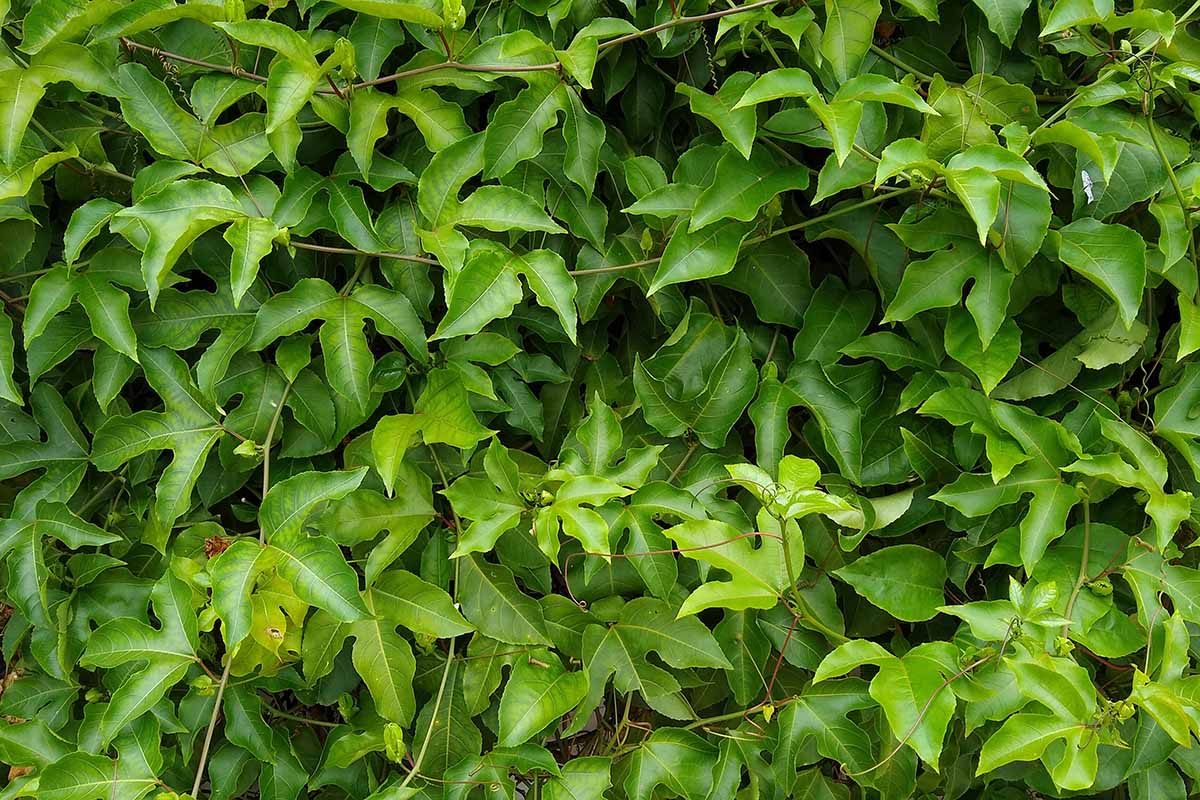
It’s never a bad idea to review our guide to growing passionflowers, to ensure that you’re doing all the things you should in order to support your plant’s growth.
Ready to take a look at the most common reasons why these gorgeous plants may fail to bloom? Let’s jump right in.
1. Age
If you bought a vine that was already blooming, or if your plant has bloomed at least once before, then this definitely isn’t your problem. But if you bought a young seedling or started your plant from seed, your passionflower might simply be too young.
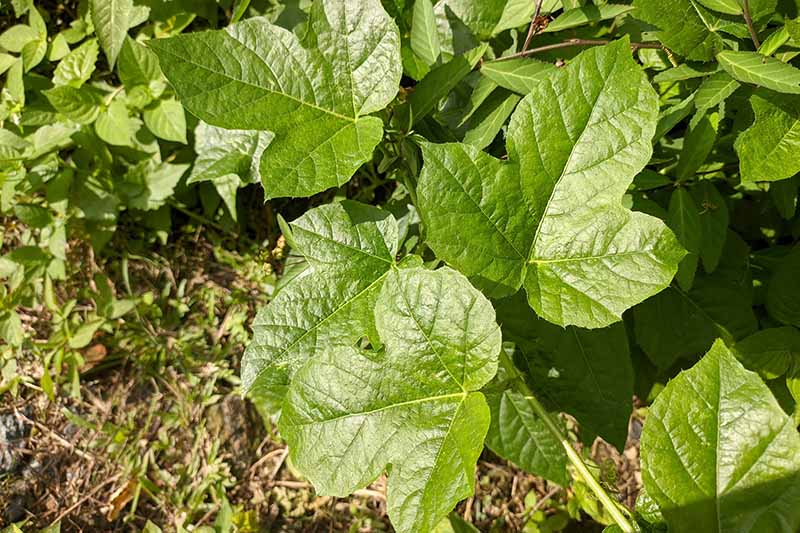
Passionflower vines need about three or four years to mature and start blooming.
Just give it time and enjoy the pretty foliage for a few years. However, if your plant is over four years old, it should be flowering. It’s time to consider one of the following issues instead.
Don’t worry that your plant might have gotten too old to bloom. As long as new vines are emerging, you should be seeing new blossoms.
If new vines aren’t forming, it could be due to disease, overcrowding, pests, sun exposure, or water issues. We’ll discuss those next.
2. Disease
There are several types of diseases that can impact passionflower blooming.
Anthracnose, caused by the fungus Colletotrichum gloeosporioides, causes flowers to abort. Root rot can prevent the development of flowers, and cause existing buds and flowers to abort as well.
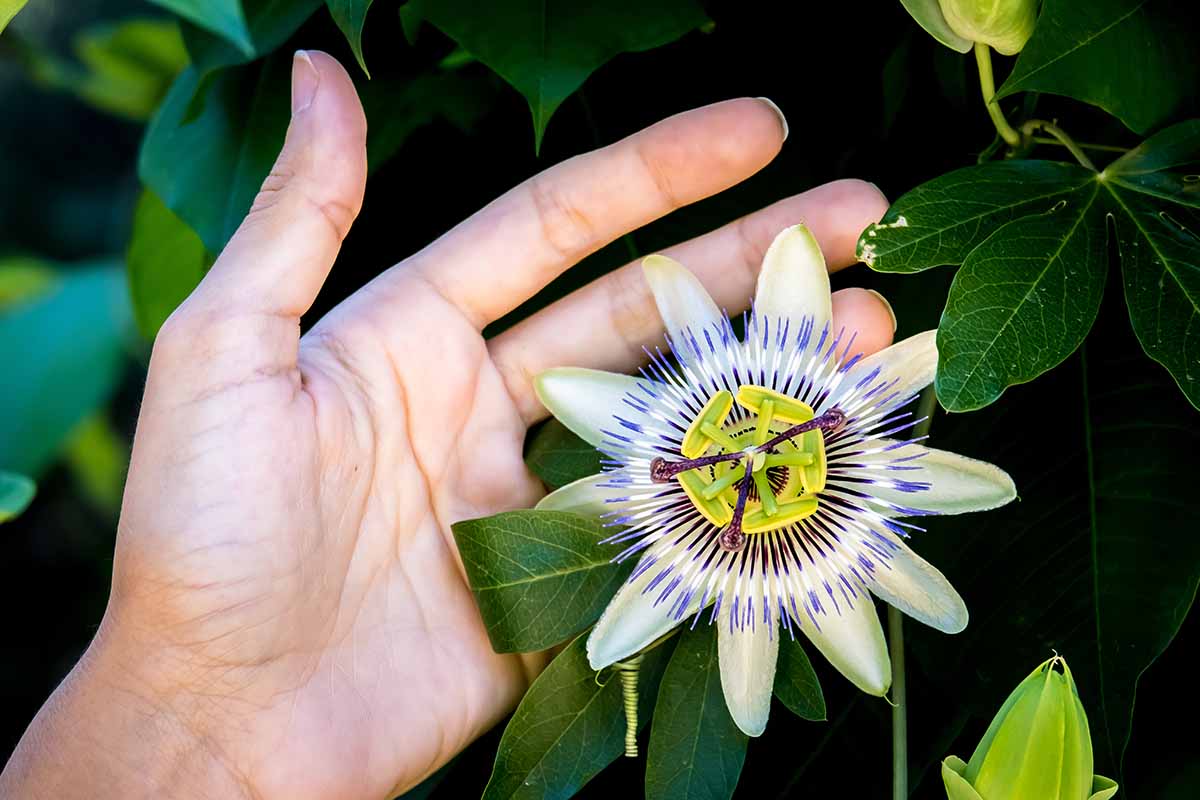
The fungus Cladosporium oxysporum causes scab, which delays flowering in infected plants. Mosaic virus can cause delayed bud development or a lack of blossoms.
Because diseases can manifest in so many different ways, you’ll need to examine your plant closely to determine if it has a disease.
See our guide to passionflower disease for identification, prevention, and treatment tips. (coming soon!)
3. Feeding Problems
Passionflowers aren’t the most demanding in terms of nutrients, but they will need feeding now and then.
If you didn’t test your soil prior to planting, you might want to do so now. If the test results indicate that the soil is lacking in any nutrients, add them in.
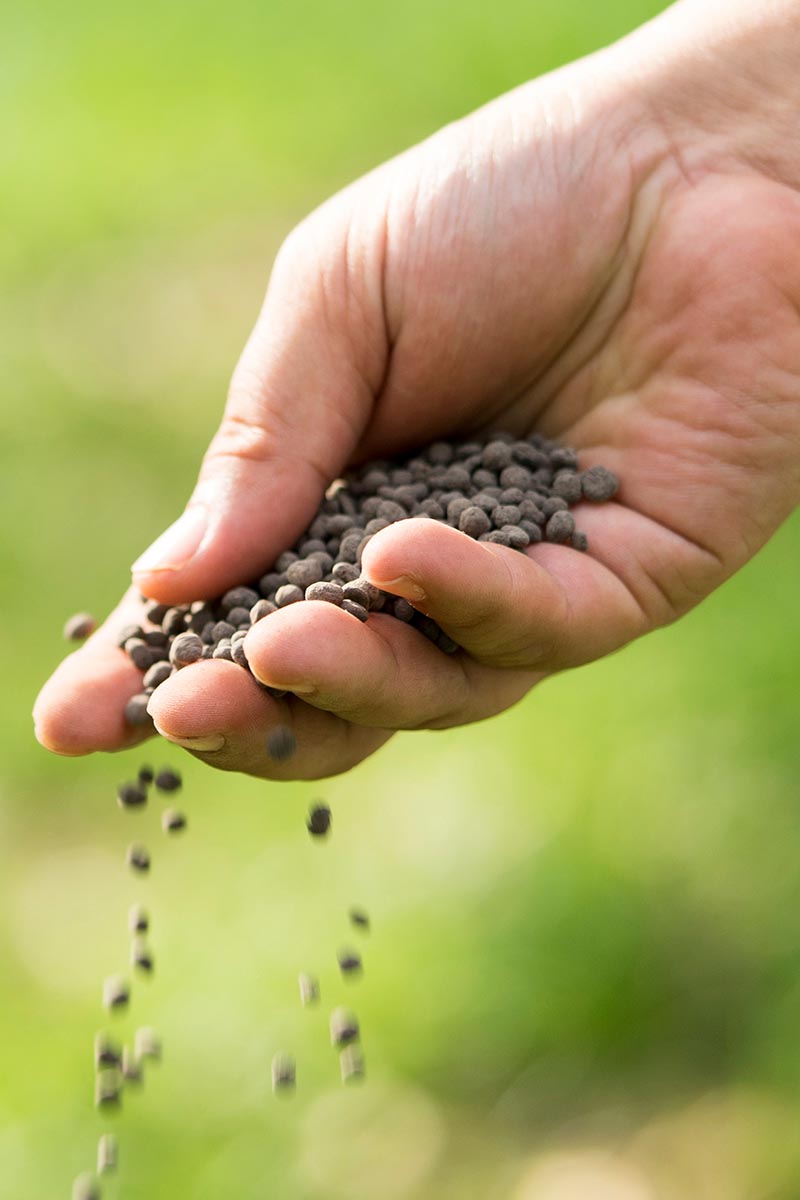
If your plant has just a few flowers and a ton of foliage, the problem might be too much fertilizer, rather than too little. Specifically, the vine might be getting too much nitrogen. Stop fertilizing and water as frequently as you can to flush out the excess.
Our guide to feeding passionflowers has lots more helpful information.
4. Overcrowding
If overcrowding is the problem, you’re more likely to see just a few blossoms or smaller flowers rather than none at all.
Passionflowers do well when their roots are a little crowded, but it is possible to have too much of a good thing. If you’re growing your plants in a container, it might be time to upgrade to a size up.
Remove the plant from its existing container and check out those roots. If you’re seeing far more roots than soil, or lots of roots coming out of the drainage holes, loosen them up and transplant into a larger container.
You don’t need to worry about the roots in the ground having enough space, but you should be mindful about the vines becoming too crowded.
Each year, head outside with pruners and snip away some of the older or weaker vines. Then, just shape things up and remove a few of the vines from spots that look a bit overcrowded.
5. Pests
Pests such as aphids and thrips can cause flowering to be delayed or stunted, or they may cause the flowers that do emerge to be distorted.
Examine your plant closely for any signs that pests are present and address the issue promptly.
6. Sun Exposure
Different species of passionflowers have different sun exposure preferences, but in general, the plants need full to partial sun.
If your plant is in an area with too much shade, it won’t bloom. If your vine is also leggy, you can be fairly confident this is the problem.

To confirm that your plant isn’t receiving the sun it needs, observe it each hour for one full day and record how long the plant is in direct sunlight. Then, compare that to the recommended exposure for your particular species or cultivar.
If too much shade is the problem, you’ll need to do some trimming of nearby plants or move your vine somewhere a bit sunnier.
7. Water
It’s no big deal if you over- or underwater your plant once or twice, but chronic watering issues will cause passionflowers to become stressed – and stress means they might not bloom.
Ensure that you’re providing water once the surface of the soil begins to dry out. The soil should be moist but not soaking wet at all times.
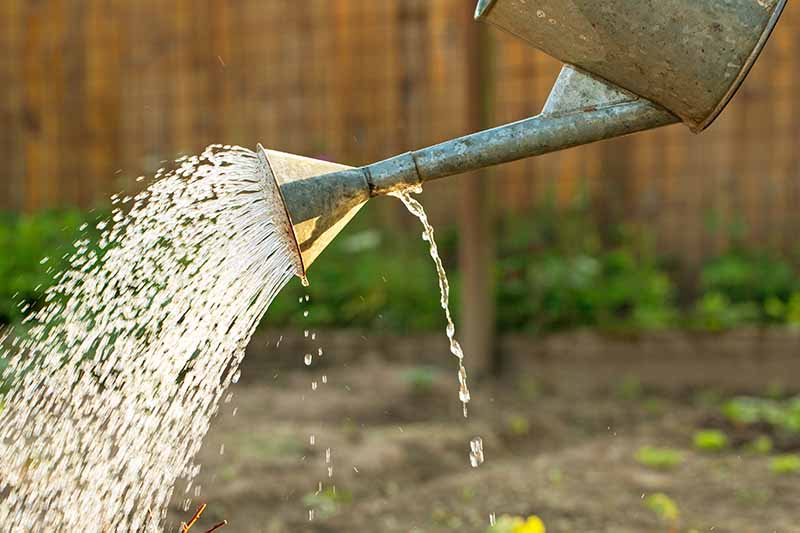
Most of the time, reducing the amount of water is sufficient to improve things, but if you have heavy clay or poorly-draining soil, you’ll need to carefully dig the plant out of the soil and work in lots of well-rotted compost at least a foot down and out. Replant in the amended soil.
If you’re growing in a container, be sure that it has at least one drainage hole. If not, drill one or repot in a container with drainage.
If you haven’t refreshed the soil in the container for five or more years, pull the plant from the container, remove as much of the soil as possible, and repot with fresh potting soil.
Put the Flower Back in Your Passionflowers
The first year I tried growing passionflowers, I put my vine in too much shade. It produced a few lackluster blooms on a spindly vine.
It felt like that passionflower was mocking me (and yes, I do tend to anthropomorphize my plants) with its refusal to do what it was bred to do.
But we came to an understanding and I moved the container to a sunnier spot. I was rewarded with a much happier plant that was absolutely lousy with blossoms within a month.
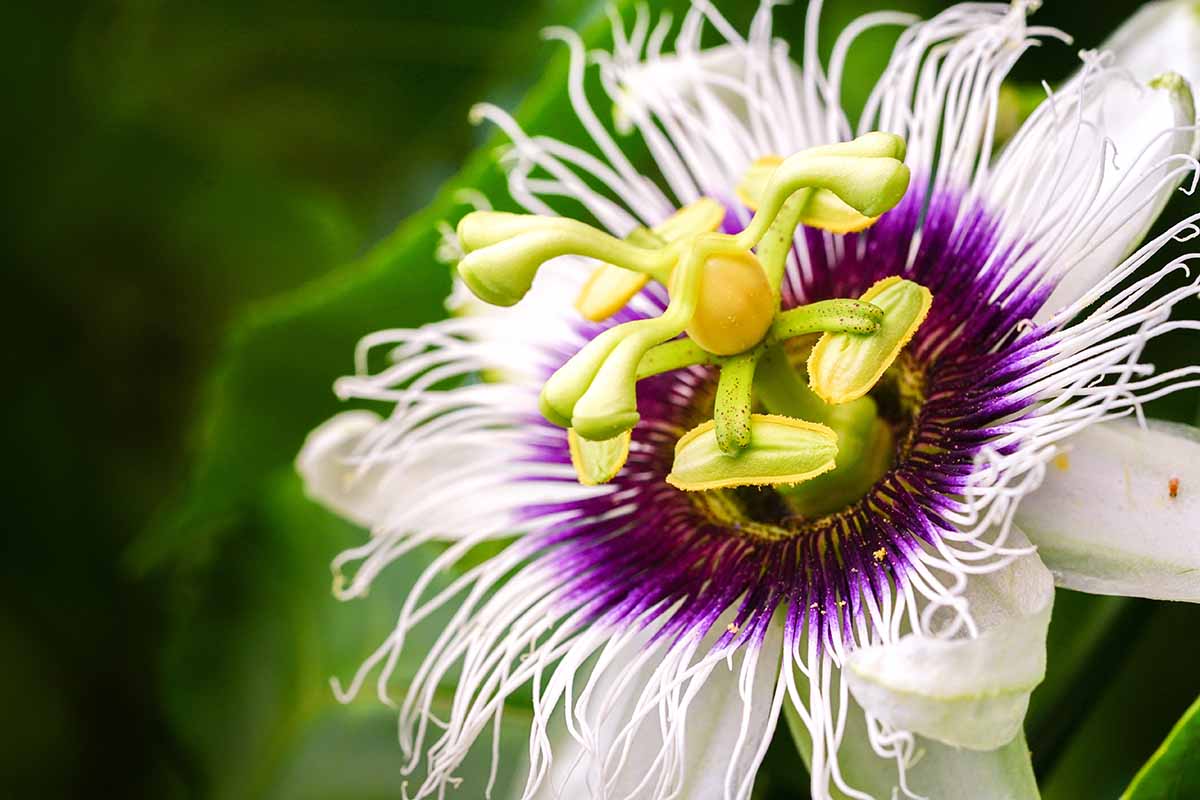
I hope this guide helps you tackle your own passionflower woes. Once you’ve resolved the issue, come back and let us know what worked for you. Share in the comments!
For more fabulous vine-growing options, you might be interested in the following guides:
I have two vines .. they grow healthy green leaves no flowers …
Hi Mariann, I’m sorry to hear that. Can you give me a few details on what’s going on? Do the plants look healthy otherwise? Any signs of fungus or spotting on the leaves?How old are they? Are they receiving enough sun? You might want to check throughout the day and make sure they’re in sun for six hours or more each day. There are lots of reasons these plants might not flower so I need a bit more info to narrow things down.
My two years old passion fruit vine in central Florida and in ground is lush green and loaded with beautiful blooms for the past two months. But the hand pollinated flowers drop off after a week without fruiting. Why?
Oh no, that’s frustrating. It sounds like your plant is receiving enough sunlight and since you hand pollinated, pollination shouldn’t be the issue. Have you checked your soil to make sure that it has all the necessary nutrients to support fruit growth? What cultivar or hybrid are you growing? Some don’t produce fruit. You might want to read our guide for some tips to sort out why this is happening.
I am in central Florida. My Passion flower vine is growing like crazy. It is very healthy looking but has not had one bloom. It has been growing for about 4 months. I have grown these before and never had this problem. HELP.
Hi Corinne – depending on how old the plant was when you bought it, it’s likely just too young to bloom, yet. Some cultivars take longer than others. I wouldn’t worry until next year. If you still don’t have blossoms by next summer, let us know and we’ll see if we can help.
I planted our passion flowers on trellises, and they get very little if any sun. They did great the first year, but last year I thought they were dead. Finally in late summer they began to show life and by fall had great foliage! However, there were no flowers. Now the plants are above the top of high trellises, looking healthy, (November), however here in the northwest it is beginning to get cold. I am wondering, should I prune the healthy vines back, and if so, how far. Also I am reading that I need to mulch the plants. I… Read more »
Hi Carole, if your plants never flowered, I suspect that they’re not receiving enough sunshine. While they don’t need full sun, they do need at least some direct sun. If you can prune the trees around it to help let in light, great! Otherwise, you’ll either need to move the plant or wait until it can grow into a spot with sun before you see blossoms. You don’t need to prune the vines if they’re hardy to your growing zone. We usually leave any heavy pruning for late winter. Feel free to give them a light pruning if you want.… Read more »
Hi there. I am in Canada zone three so I brought the plant in over the winter and cut it down. It was amazing last summer and had tons of blooms. This spring I transplanted it and it’s been and sunshine and warmth and growing like crazy, but not one bloom! So it’s not a new plant but I have no idea why it’s not blooming? It’s in a perfect container, I haven’t overfertilized or overwatered and it has gotten lots of sunshine. Any suggestions?
Val, I was able to retrieve your photo and we’ll be in touch with a response for you soon!
Hi Val, I wouldn’t worry about it too much. It sounds like you’re doing everything right. Sometimes when we transplant a plant, it’s a bit stunned the following year, but it will get its bearings and will return to its best self. Just make sure to keep giving it the right amount of sun, water, and fertilizer, and I bet it will look great again next year.
Why is my passion flower not flowering after 7 years? Really green, the leaves drop of like it’s dead. Any ideas why?
I live in Virginia. I think the main root of my Passion Fruit vine froze last winter. I thought it was gone. But around late June I saw new leaves. My concerns are it is growing like crazy but no flowers. Summer’s almost gone.
1. Will this vine flower this late in the summer? 2. How do I keep it from freezing this coming winter?
Thank you for your knowledge and advice!
Hi Lori, it’s doubtful that your plant will flower this year, but at least it’s still alive! The plant probably wasn’t able to generate enough energy after recovering from the winter, which explains the lack of flowers. So long as you protect the plant this winter, it should be recovered enough to flower next year. So let’s talk about protection. If your plant is in the ground, and I’m assuming it is, cover it with two or three inches of mulch. The big risk to roots is that the ground will freeze and thaw over and over. You want to… Read more »
My late hubby bought me passionflower (he’s been gone 11 years so its at least 13). Always beautiful and green – I bring in house sunroom in winter. I live in British Columbia, Canada. It has never bloomed but did have 7 blooms on it when he bought it.
Hello Sherrymay, I’m sorry about your loss, but how sweet that you continue to be able to enjoy his gift. You might try letting the plant go dormant for a month during winter to see if that will kick it into blooming gear. If you’re interested in trying that, visit our guide to overwintering passionflowers.
Otherwise, how much direct sun does your plant receive in the winter and the summer?
Hi, my passion flower is five years old from a friends cutting, off her one year old plant. It has had blooms before this year. No blooms this year. I just cut it all down to ground in frustration,…I tend to garden angry sometimes. 🤪. I’m wondering if it will grow back this next spring if I mulch over it for the winter? I have cut it back before, 2 yrs or so ago all the way down to the ground and tried to dig it out of the ground because I was frustrated with the dang plant growing everywhere… Read more »
I forgot to tell you that the vine is of the purple yellow white variety…shown in your main article’s photo. Also, I live in Pacific Northwest, Seattle area. Thank you for your time…😁
Hi there, I think we’ve all gardened angry at some point! It’s hard to say if it will grow back. It depends on when you cut it down and how many nutrients the roots were able to store up before then. Sometimes you need to let the plant grow for a few years without cutting it to the ground to get good flowering, but it could simply be a case of not enough sun, food, warm temps, etc. If it were me, I’d let it grow back next year (if it does) and then leave it until the following year… Read more »
I started my passion fruit from seed and grew it in a pot for the first three years. Winters were spent in our 4 seasons solarium ( full Sun on all three sides) Summer spent outdoors in full Sun. It has never flowered but has the most beautiful foliage. I was adviced to plant it the ground during the growing season. It has now had two full summers in the the ground and still no flowers. It’s an aggressive plant and taken over railings and pillars of our home. Help! Year 6 and still nothing. I’m tempted to not over… Read more »
Hi there, I’ve actually talked to a few people who have come across this same problem recently. Allowing the plant to go dormant in the winter solved the issue. Have you tried allowing your plant to go dormant instead of keeping it growing throughout the winter?
We talk more about dormancy in our guide to overwintering passionflowers if that’s something you’d like to try. It might take two years to see results, but I would way give it a go. If you do, let us know how it goes so we can help others having this issue.